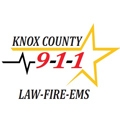| Refresh | This website co.knox.oh.us/emergency-management-agency/about/ is currently offline. Cloudflare's Always Online™ shows a snapshot of this web page from the Internet Archive's Wayback Machine. To check for the live version, click Refresh. |
The Knox County Office of Homeland Security and Emergency Management is most commonly referred to as the Knox County Emergency Management Agency, or simply EMA.
The purpose of the Knox County Emergency Management Agency is to provide coordination and integration of all activities necessary to build, sustain, and improve the county’s capability to prepare for, protect against, respond to, recover from, or mitigate against, threatened or actual natural disasters, acts of terrorism, or other manmade disasters.
The Knox County Emergency Management Agency’s mission is to provide excellent emergency management services to those who live, work, and visit Knox County.
The establishment of an integrated emergency management system that increases the emergency management capability of Knox County through communitywide networking, coordination, interoperability, partnerships, and innovative thinking that addresses all hazards.
The Emergency Operations Center (EOC) is where staff from multiple agencies typically come together to address imminent threats and hazards and to provide coordinated support to incident command, on-scene personnel, and/or other EOCs. EOCs may be fixed locations, temporary facilities, or virtual structures with staff participating remotely. The EOC is a part of the Incident and Management component of the National Incident Management System (NIMS).
The level of EOC activation will be determined by the EMA Director according to the type and scope of the incident.
Monitoring Level – This is the lowest level of activation and may be utilized for monitoring potential incidents or less severe types of incidents but when a coordinated response would be beneficial. This level requires opening the EOC with minimal staffing. Positions staffed will be based on the type and scope of incident. The EOC may not be required to operate 24 hours a day and instead utilize scheduled meetings to coordinate information and response.
Partial Activation Level – This level requires opening the EOC with partial staffing. Positions staffed will be based on the type and scope of incident. Incidents necessitating partial activation may require the EOC to be operational 24 hours a day.
Full Scale Activation Level – This is the highest level of activation and would be utilized for severe, complex, or large scale incidents. All positions within the EOC will be staffed. Full scale activation will likely require the EOC to be operational 24 hours a day. If 24 hour a day operations become necessary at any level, it will be accomplished by utilizing two 12 hour operational periods.
The Executive Group consists of elected and/or appointed officials. The Executive Group may be present near the EOC but more often provide guidance from elsewhere, either as part of a formal group or individually, and provide problem resolution such as adjudication of scarce resources.
—
The Operations Group consists of representatives from each agency with a responsibility for any portion of the response and is led by the Operations Manager. The Operations Group makeup will vary based on the incident and the level of activation. Responsible for coordinating with and supporting the incident commander and on-scene responders.
—
The Planning Group makeup will vary as dictated by the incident and the level of activation. The Planning Group is responsible for collection of situation and resource status information, evaluating that information, and processing the information for use in developing incident action plans. In addition, the Planning Group is responsible for preparing a Damage Assessment Report to include damage assessment by jurisdictions.
—
The Logistics Group consists of staff to provide support to the operation of the EOC and is led by the Logistics Group Manager. The Logistics Group will assist the Operations Group in coordinating resources.
The Finance/Administration Group is responsible for providing a coordinated financial management process for the incidents or incidents and is led by the Finance/Administration Group Manager.
